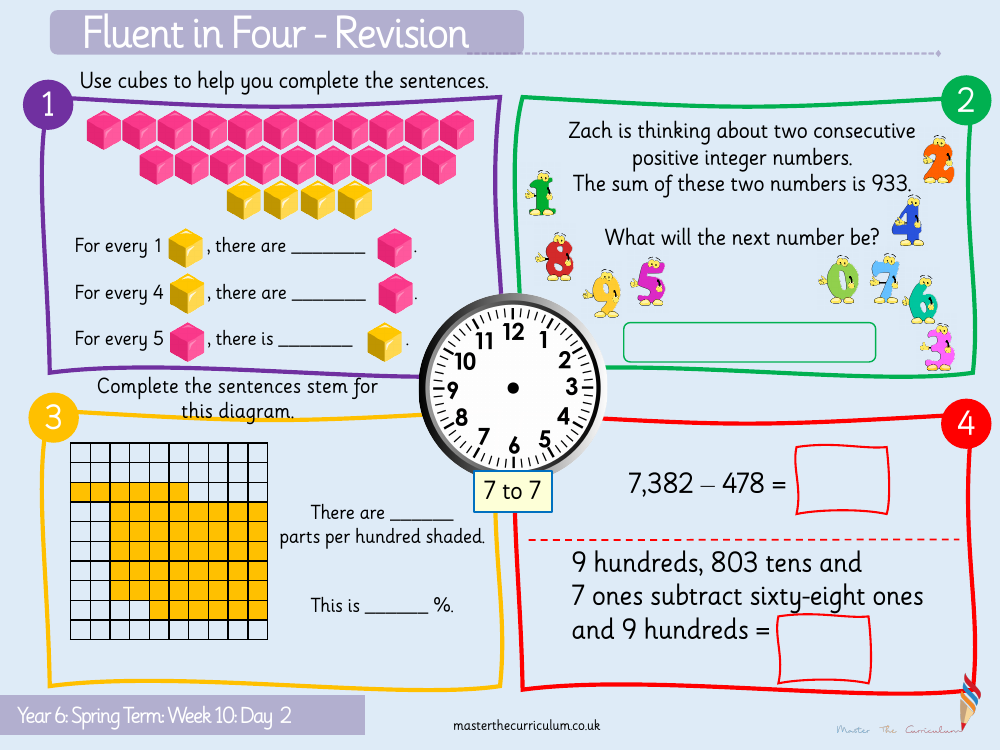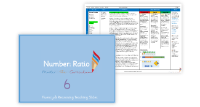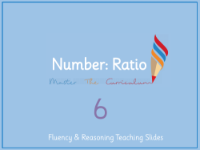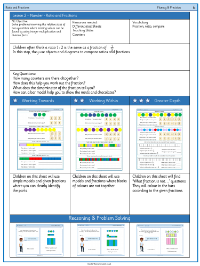Ratio - Ratio and Fractions - Starter

Maths Resource Description
In a series of mathematical challenges designed for Year 6 students, the tasks combine the use of basic arithmetic, understanding of ratios, and fractions. Students are prompted to complete sentence stems based on given diagrams and calculations. For example, they are asked to subtract sixty-eight ones and nine hundreds from a total of nine hundreds, eight hundred and three tens, and seven ones. The correct subtraction leads to the answer 7,969. In another task, students must deduce two consecutive positive integers whose sum is 933; through a process of elimination and calculation, they find that the integers are 466 and 467, with the next consecutive number being 468.
The exercises also include percentage problems, where students must identify the number of shaded parts per hundred in a diagram and convert this to a percentage. In this case, if there are 52 parts shaded, it would be equivalent to 52%. Additionally, students use subtraction to solve problems such as 7,382 minus 478, which equals 6,904. Furthermore, the use of cubes in ratio problems helps students to visually and quantitatively understand the concept of ratio. For instance, they determine that for every one cube, there are five parts; for every four cubes, there are twenty parts; and for every five cubes, there is one part. These practical and visual methods aid in reinforcing the mathematical concepts being taught.



